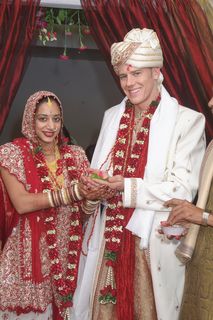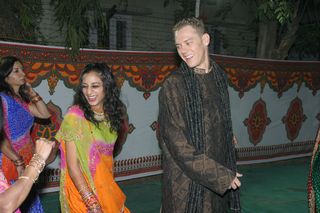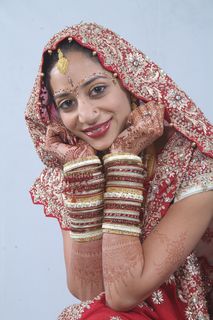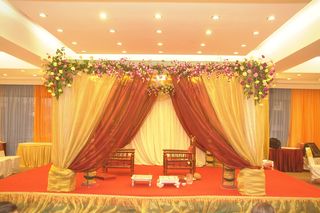Indian Wedding Traditions
What Makes Indian Wedding Traditions So Unique?
Indian Wedding traditions are rooted in long practiced Indian family traditions and Indian culture. Indian weddings are colorful, big, and uniquely exciting events! A wedding in any country is an important life event for those getting married, and their family and friends. However, Indian weddings are on a whole other level!
Indian Weddings are much different from weddings in the United States, Great Britain, and other countries. A typical American or European wedding is an event that generally lasts for up to two days. These typically consist of a wedding rehearsal day, and a day that includes the wedding and a reception. In India, things are done a bit differently. Indian Wedding Traditions are, of course, first initiated by the meeting of the bride and the groom.
Arranged Marriages vs. Love Marriages in India
In India, pre-marital relationships are typically broken into two categories: love marriages and arranged marriages.
In the past, Indian wedding traditions historically began with what is referred to as an arranged marriage. An arranged marriage is one that is arranged by a bride or groom's parents or other senior family members. These parents or family members would determine appropriate matches for their son or their daughter to wed.
Many weddings that take place in India are still arranged marriages, so it is still pretty common for a bride and groom's respective parents to talk with one-another and determine if their children will be a good match for one-another. The parents then have the potential bride and groom meet, and in some cases, they may have little to no choice in the matter and are later married. In other words, in a traditional arranged marriage, the couples begin as strangers and then must learn to love each other over time. Arranged marriages are very common in India's rural areas, but also take place in urban areas.
Love marriages are more common in the urban areas of India. A love marriage is one where a man and woman meet one-another by chance, date and fall in love before they introduce the concept of marrying one-another to their respective parents. In short, a love marriage is what is common in the United States, Europe, and many other countries. Love marriages are a more recent phenomenon in India and are becoming more and more common due to globalization. The younger Indian generations have more and more access to western cultural ideas and philosophies and have adopted many as their own. In many cases, the bride and/or the groom may study abroad in the United States or England and learn more western ways of dating.
Whether a love marriage or an arranged marriage, weddings in India will normally span three days, but can go even longer! The first day is often a gathering of wedding attendees, the couple, and their families. On this day, people gather to meet socially, share excitement over the events to come and to eat delicious Indian food! This gathering location is often a home, and the first day is often utilized to bless the bride, the groom, their families, the wedding location, and the gathering location. For example, two days prior to my wedding, a Hindu Priest performed a Puja, or prayer, blessing for home, for those to be wed and for their family members. In addition, this is normally the day when the bride and the bride's maids have their Henna done.
Henna and Other Indian Wedding Traditions
Henna is a root extract that can be carefully and artfully used as an ink on the skin in order to create an intricate design. Henna is sort of like a temporary tattoo because the thick root extract stains the skin for days and sometimes weeks! Applying intricate Henna for an Indian wedding is a developed skill and a specialist is usually hired to perform the service.
The second day in an Indian Wedding is often celebrated as a Garba ceremony. Garba celebrations can take many forms, but always include fun, food and dancing. Many different dances take place at a Garba. There is normally a congo-line style dance where participants dance around the floor in a single file line. Another popular dance is performed where dancers hit decorated sticks together to coincide with the rhythm of the music; the dancers switch dance partners as the song progresses.
In India, the couple to be wed is known as the bride and the bride-groom. The couple may choose to have a live band perform traditional Indian music, or they may hire a DJ. Some couples enjoy pllaying a mix of Indian and Western dance music at their Garba. Garbas also include food, games and sometimes even fireworks!
In a way, Garba is the part of the wedding that gives participants the opportunity to really celebrate and let-loose. The third day of a three-day wedding is where the ceremony takes place. The earlier portion of the day is all about preparation; people are gathering flowers, making final mends to clothing, picking up or preparing food and much more. Many times, a groom will ride a horse to the location of the wedding, in some regions they ride an elephant. At my wedding, I arrived in a car, not quite as unique as a horse or elephant.
A woman to be wed will often wear the most extravagant and colorful outfits that they can find. In many areas of India, woman wear beautiful dresses called Sari's. A Sari is a high quality cloth that is wrapped around a woman and secured. The bride pictured above is wearing a red one that features fancy designs and sequins. One reason for the brightly colored clothing, is that black, a popular fashion color in western countries, is considered bad luck in many regions of India. Most of all, the Indian people love color and use it on almost every occasion.
As far as a Indian wedding traditions go, a marriage ceremonies customs and activities can vary greatly depending on the Region of India where in India the wedding takes place. In addition, the religion of those being married can drastically change the wedding ceremony. Our marriage took place in the State of Gujarat and so we had a Hindu Priest. The wedding took place under a special ceremonial canopy, like the one pictured above. Our guests sat in chairs and watched the ceremony. My wife and I said our vows, were joined together by stringed flowers, and we walked around fire together.
Indian Wedding Traditions Include Serving Indian Food
It would be a great disservice to conclude explaining Indian Weddings without bringing up Indian Food! Indian Food is a really important part of the culture of the Indian People. Visit our Indian Food Recipe page to learn more and to get some great recipes!
Regardless of the religion, budget or other factors that influence what Indian wedding traditions will take place at an Indian wedding, you can be assured it will always be colorful, fun and include great food.
Leave Indian weddings to discover India culture.
Find out what it's like in India today.
Discover more of India by visiting our homepage.






